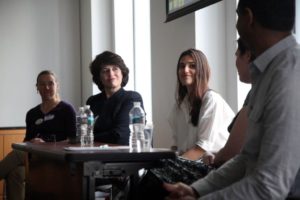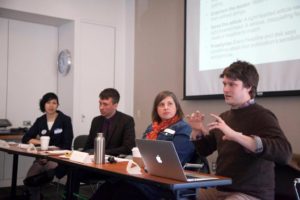Professional Development Day, a full-day professional development event for science writers, has been DCSWA’s signature event since 2006. Every year, between 100 and 150 science reporters, PIOs, editors, radio and video producers and freelancers gather for a fun and exciting day of networking and skill-building! This year’s Professional Development Day was held on Saturday, April 7, 2018, and included panel sessions, plenary talks, lunch, all-day resume coaching, a mentoring session, pitch slam, and happy hour at a nearby bar.
Details
When: Saturday, April 7, 2018, 8:15 am – 5:15 pm
Where: AAAS Headquarters, 1200 New York Ave NW, Washington, DC 20005
Cost: $55 for DCSWA members; $80 for non-members, $40 for students
Program
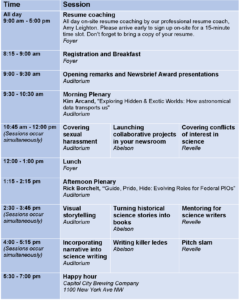
Session descriptions
Resume Coaching
9:00 am – 5:00 pm, foyer
Sign up for a 15-minute slot with Amy Leighton, principal of “All Resume Writing Service,” at the main registration table. First come, first served; slots go fast. Don’t forget your resume!
Welcome and 2017 Newsbrief Awards Presentation
9:00 – 9:30 am, Auditorium
DCSWA President Lauren Lipuma will deliver a brief “State of the DCSWA” address and pass the duck to incoming president Matthew Wright. The winners of the 2017 Newsbrief awards will also be announced.
Morning plenary session: Exploring Hidden & Exotic Worlds: How astronomical data transports us
9:30 – 10:30 am, Auditorium
Speaker:
Kimberly Kowal Arcand, Visualization Lead for NASA’s Chandra X-ray Observatory, co-author of Magnitude: The Scale of the Universe.
Moderator:
Lauren Lipuma, American Geophysical Union
Breakout session: Covering sexual harassment
10:45 am – 12:00 pm, Auditorium
From Harvey Weinstein to Donald Trump, media stories about sexual harassment have dominated the recent news cycle and changed the conversation about women’s equality and safety in the workplace. Science is no exception, but writers and publications covering harassment allegations must consider unique ethical, practical, and legal issues in their reporting. Our experienced panellists will discuss how to navigate this complex yet crucial new beat.
Panelists:
Elizabeth Culotta, Science
April Simpson, Current
Meredith Wadman, Science
Andrea Widener, Chemical & Engineering News
Moderator:
Sara Reardon, Nature
Breakout session: Launching collaborative projects in your newsroom
10:45 am – 12:00 pm, Abelson
Ever feel like you’re alone, even in a newsroom full of reporters? Ever feel like you can’t break out from the daily coverage hamster wheel? In this session we’ll off some perspective on how to approach collaborations within, and between newsrooms. We’ll offer nuts-and-bolts tips on everything from story generation and ideas, up to how pitch more investigative projects/collaborations to your editors and bosses.
Panelists:
Eliza Barclay, Vox
Andrea Kissack, NPR science desk
Ben Wieder, McClatchy DC Bureau national investigative team
Moderator:
Adam Allington, Bloomberg BNA
Breakout session: Covering conflicts of interest in science
10:45 am – 12:00 pm, Revelle
Why is it important for scientists or government officials to be transparent about their financial ties? And how should writers handle their own potential conflicts when covering a story? In this session, panelists will discuss how to identify and search for conflicts of interests from their sources, and how to check themselves for potential bias.
Panelists:
Christine Dell’Amore, National Geographic
Steve Gibb, Bloomberg Environment
Genna Reed, Union of Concerned Scientists
Moderator:
Matt Davenport, Chemical & Engineering News
Afternoon plenary session: Guide, Pride, Hide: Evolving Roles for Federal PIOs
1:15 – 2:15 pm, Auditorium
Speaker:
Rick Borchelt, Director of Communications and Public Affairs for the Department of Energy’s Office of Science, former DCSWA president
Moderator:
Lauren Lipuma, American Geophysical Union
Breakout session: Visual storytelling for writers
2:30 – 3:45 pm, Auditorium
Too often, we writers treat visuals as an afterthought– the icing on the cake, rather than part of the cake itself. Learn from award-winning designers, photographers, and video editors how to approach storytelling as an integrated process, in which still images, film, and data are all crucial ingredients. With editors from Science, Nature, and National Geographic, we will discuss: how to write for video, how (and how not!) to source images, how to take better pictures using only your iPhone, and how to think like a graphic designer. Cake-eaters of all classes, welcome!
Panelists:
Sarah Crespi, Science
Bill Douthitt, Science
Jehan Jellani, National Geographic
Jason Treat, National Geographic
Moderator:
Catherine Matacic, Science
Breakout session: Turning historical science stories into books
2:30 – 3:45 pm, Abelson
Science is full of stories waiting to be told: the unsung heroes, the births of new fields, the accidental discoveries that changed the course of history forever. Books like The Immortal Life of Henrietta Lacks, Hidden Figures and The Poisoner’s Handbook have even crossed over from science literature to achieve mainstream success. In this session, panelists will discuss their experiences writing historical science books and bringing these fascinating stories to life, offering pearls of wisdom for writers with a book idea and advice on pitfalls to avoid.
Panelists:
Jason Bardi, Inside Science, author of The Calculus Wars and The Fifth Postulate
Kevin Begos, author of Tasting the Past
Mitch Waldrop, Freelance, author of Complexity and The Dream Machine
Moderator:
Sushma Subramanian, University of Mary Washington
Breakout session: Mentoring for science writers
2:30 – 3:45 pm, Revelle
Let’s face it: We all need help sometimes. Whether you’re trying to break into the world of science writing and don’t know where to start, a freelancer looking for advice on pitching stories or just wondering how best to advance your science writing career, this year’s brand-new mentoring session is for you! In this session, several established science writers will be available to answer your general career-related questions. Simply show up and have a face-to-face chat with one of our mentors. Please limit your time with each mentor to 10 minutes to allow everyone a chance to ask questions.
Mentors:
Yudhijit Bhattacharjee, Freelance
Rick Borchelt, Department of Energy
Brian Clark Howard, National Geographic
Jane Lee, Nature
Sarah Zielinski, Science News for Students
Moderator:
Gretchen Miller, Johns Hopkins University
Breakout session: Incorporating narrative into science writing
4:00 – 5:15 pm, Auditorium
Good science writing has to do more than just deliver the facts. It should also be a narrative — a story that picks the readers up, guides them along, and leaves them feeling satisfied at the end. Come hear our panelists discuss how to achieve that.
Panelists:
Olivia Ambrogio, American Geophysical Union
Yudhijit Bhattacharjee, Freelance
Moderator:
Mitch Waldrop, Freelance
Breakout session: Writing killer ledes
4:00 – 5:15 pm, Abelson
Aside from the headline, the lede is arguably the most important part of any story. Whether it’s for a science news story or a press release, a lede has to convey a lot of information in a short amount of space while keeping a reader engaged enough to want to know more. So how do you write a lede that is compelling, succinct, interesting and accurate? What makes one lede better than another? In this session, panelists will describe their philosophies for writing killer ledes and share examples of some of the most awe-inspiring and cringe-worthy opening lines they’ve encountered in their careers.
Panelists:
Nanci Bompey, American Geophysical Union
Seth Borenstein, Associated Press
Sarah Kaplan, The Washington Post
Moderator:
Matt Wright, University of Maryland College Park
Breakout session: Pitch slam
4:00 – 5:15 pm, Revelle
In the ever-popular pitch slam, freelancers will meet one-on-one with editors of their choice for five minutes to pitch story ideas. Editors will provide guidance on improving the pitch or the story itself, while suggesting possible publications if the story is not suitable for their own. You may pitch to as many editors as you wish, one at a time, and one story idea at a time. Sign up for time slots at registration. Please limit yourself to three sign-ups before noon.
Editors:
Jason Bardi, Inside Science
Rachel Gross, Smithsonian
Brian Clark Howard, National Geographic
Karen Kaplan, Nature
Jane Lee, Nature
Catherine Matacic, Science
Lisa Moore, National Wildlife
Eugene Russo, PNAS Front Matter
Pooh (Margaret) Shapiro, The Washington Post
Cori Vanchieri, Science News
Peter Weiss, Eos
Lauren Wolf, Chemical & Engineering News
Sarah Zielinski, Science News for Students
Moderator:
Josh Rapp Learn, Freelance
Support a science writer
If you’re interested in making a donation to the Professional Development Day scholarship fund to help a student, early-career or other science writer with financial need take advantage of one of science writing’s top professional development opportunities, you can donate on this page or email president@dcswa.org for more information.

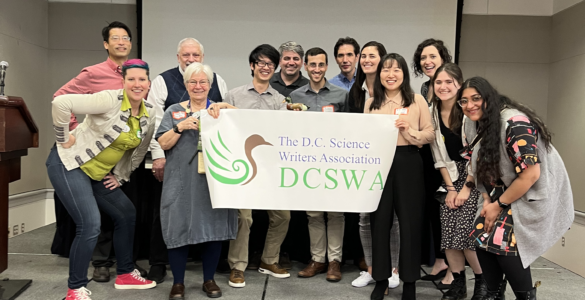
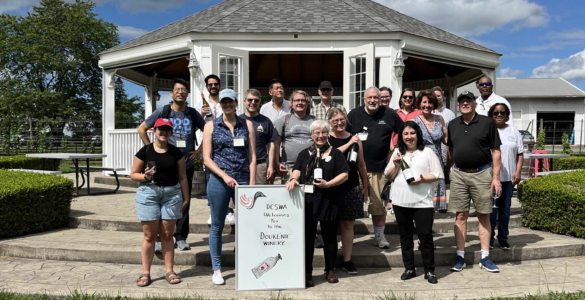
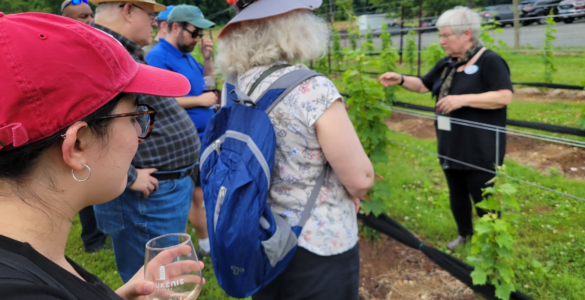
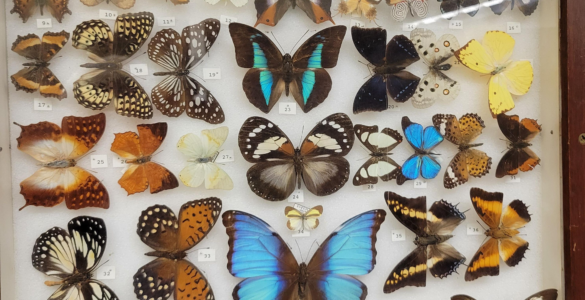
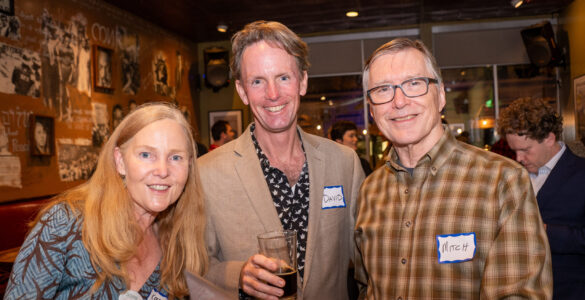




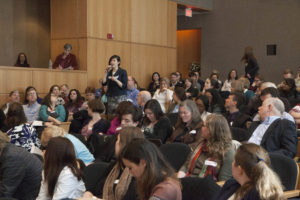 Thanks to the generosity of DCSWA members, DCSWA was able to provide scholarships to a team of early-career writers to document
Thanks to the generosity of DCSWA members, DCSWA was able to provide scholarships to a team of early-career writers to document 

